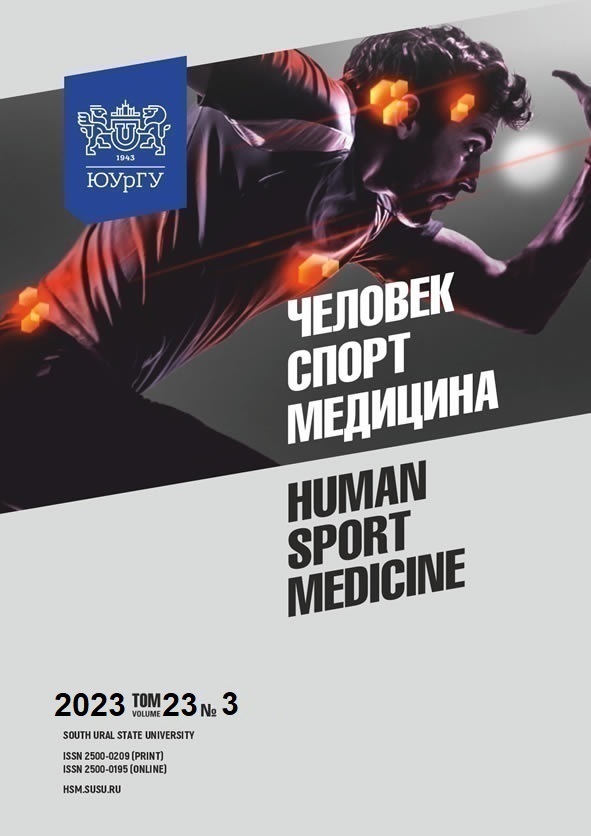THE RELATIONSHIP BETWEEN REACTION TO A MOVING OBJECT WITH CONCENTRATIONS OF BIOGENIC AMINES AND KINEMATIC/DYNAMIC PARAMETERS OF COMPLEX COORDINATION MOVEMENTS IN BIATHLETES
Abstract
Aim. The study was aimed at identifying the relationship between the functional state, coordination abilities of the CNS, and various kinematic and dynamic parameters of complex coordination exercise. Materials and methods. The study involved 31 elite athletes. Visuomotor coordination variables were assessed by the NS-Psychotest, a computer complex for psychophysiological testing (Neurosoft, Russia). Dynamic parameters were recorded during the counter movement jump with the MuscleLab Force Plate (Ergotest Innovation A.S., Norway). Quantitation of the central nervous system markers in blood samples was performed using an ultra-high performance liquid chromatograph combined with the triple quadrupole mass analyzer LCMS-8060 (Shimadzu, Japan). Results. The maximum jump output in biathletes was closely related to the predominance of excitation processes in the central nervous system. Norepinephrine concentration had a positive relationship with maximum and relative outputs, reactivity coefficient, and jump height, whereas epinephrine level was correlated only with jump height. Conclusions. Reaction to a moving object in elite biathletes demonstrates certain relationships between visuomotor coordination, kinematic and dynamic parameters of complex coordination exercise, and blood levels of biogenic amines.
References
References on translit
Copyright (c) 2023 Human. Sport. Medicine

This work is licensed under a Creative Commons Attribution-NonCommercial-NoDerivatives 4.0 International License.















